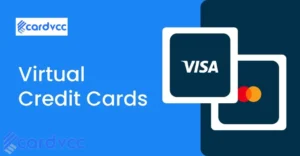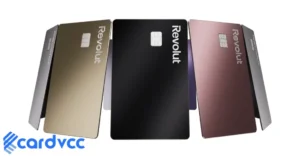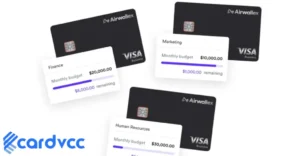A debit card authorization charge temporarily holds funds in your account during a transaction. It ensures you have sufficient balance.

Debit card authorization charges are common in various transactions, particularly in hotels, car rentals, and online purchases. These charges act as a temporary hold on a specific amount in your bank account to ensure you have enough funds to cover the transaction.
This process protects merchants from potential losses due to insufficient funds. Typically, the hold is released once the actual payment is processed, which can take a few days. It’s important to monitor your account to understand these holds and manage your available balance effectively. Awareness of these charges helps in avoiding any unexpected overdrafts or declined transactions.
Introduction To Debit Card Authorization
Understanding debit card authorization charges is essential for consumers. This charge often appears during certain transactions. It ensures the validity of the card and funds.
What It Is
A debit card authorization charge is a temporary hold. This hold verifies if funds are available. It does not immediately deduct money from the account. Instead, it ensures the transaction can be completed.
The charge usually appears as a pending transaction. Its amount may vary based on the merchant. This hold is common in gas stations and hotels.
Common Uses
Merchants use debit card authorization for various reasons. Here are some common uses:
- Gas Stations: They place a hold to ensure you can pay for gas.
- Hotels: They verify funds for room charges and incidentals.
- Rental Services: Car rentals and equipment rentals are used to guarantee payment.
These holds protect merchants from potential losses. They also ensure that customers have sufficient funds. This process benefits both parties involved.
Below is a table showing typical authorization amounts:
| Merchant Type | Authorization Amount |
|---|---|
| Gas Station | $1 – $100 |
| Hotel | $50 – $200 |
| Car Rental | $100 – $500 |
Understanding these charges helps you manage your finances better. Always check your account for pending charges. This way, you can avoid any surprises.
How Authorization Charges Work
Authorization charges can be confusing. This guide will explain the process in simple terms. Learn how and why these changes occur.
Process Explained
When you swipe your debit card, the bank checks if you have enough money. This is called an authorization. The bank holds this amount until the purchase is completed.
The merchant sends a request to your bank. The bank then approves or denies it. If approved, the funds are held for the merchant. If denied, the transaction fails.
Here are the steps in a table:
| Step | Action | Details |
|---|---|---|
| 1 | Swipe Card | Initiate transaction at merchant’s terminal |
| 2 | Authorization Request | Merchant requests approval from the bank |
| 3 | Bank Response | The bank checks funds and approves or denies |
| 4 | Hold Funds | The approved amount is held in your account |
| 5 | Transaction Completion | Funds are transferred to the merchant |
Time Frame
Authorization holds can last for different times. Usually, the hold lasts from a few hours to several days. If the transaction is completed quickly, the hold released soon.
Sometimes, holds can last up to 7 days. This depends on the merchant and bank policies. Always check your bank’s rules for specific time frames.
Here’s a quick list of common time frames:
- Restaurants: 1-3 days
- Hotels: 2-7 days
- Gas Stations: 1-5 days
- Online Purchases: 1-5 days
Reasons For Authorization Charges
Debit card authorization charges often confuse many people. These charges serve important purposes. They help protect both consumers and merchants. Understanding the reasons behind these charges can clear up confusion.
Security Measures
Authorization charges play a big role in security measures. They help verify that your debit card is active and valid. This reduces the risk of fraud. Merchants use these charges to confirm your bank account has enough funds. This prevents declined transactions later.
For online purchases, these charges ensure your card details are correct. This is especially important for first-time transactions. The small charge checks if the card is linked to a real account. This helps keep your account safe from hackers.
Merchant Policies
Many merchants have their merchant policies regarding authorization charges. These policies vary by store and industry. Restaurants might place a hold to ensure you can pay the bill. Hotels use these charges to cover potential extra costs, like room service.
Some subscription services also use authorization charges. This ensures your card is valid before starting the service. This helps them avoid issues with unpaid subscriptions. Knowing these policies can help you understand why the charge appears.
Authorization charges usually disappear within a few days. They are temporary and returned to your account. Understanding this helps reduce worry about these charges.
Impact On Account Balance
When you use your debit card, the bank may place an authorization charge. This affects your account balance. Understanding this impact is crucial for managing your finances.
Temporary Holds
Debit card transactions often involve temporary holds. These holds reduce your available balance temporarily. They ensure the merchant gets paid. These holds can last a few hours or several days.
| Transaction Type | Temporary Hold Duration |
|---|---|
| Gas Stations | Up to 72 hours |
| Hotels | Up to 7 days |
| Restaurants | Up to 48 hours |
Available Balance
Your available balance is affected by these temporary holds. This is the money you can spend immediately. Always check your available balance before making a purchase.
- Temporary holds reduce your available balance.
- Pending transactions may not be visible instantly.
- Large holds can limit your spending power.
Be mindful of your available balance. It helps avoid overdraft fees. Regularly monitor your account to stay informed.

Why virtual cards are safer for online shopping
Online shopping has made life easier. You can buy anything from the comfort of your home. But, it also has risks. One major risk is the safety of your financial information. Virtual cards can help keep your money safe.
What are Virtual Cards?
Virtual cards are digital versions of physical credit or debit cards. They are used for online shopping. You can create them instantly using services like Cardvcc. These cards have unique numbers and are not linked to your main bank account.
How Do Virtual Cards Work?
Virtual cards work just like regular cards. You enter the card number, expiration date, and CVV code when you shop online. The difference is that these details are temporary. They can be used for one-time or recurring payments. Once used, they can be deleted or changed.
Benefits of Using Virtual Cards for Online Shopping
1. Enhanced Security
Virtual cards offer enhanced security. They are not linked to your main bank account. This means even if someone steals your virtual card details, they cannot access your main account.
2. One-time Use
Many virtual cards can be set for one-time use. This means once you use it, the card details become useless. This reduces the risk of fraud.
3. Spending Limits
You can set spending limits on virtual cards. This is helpful if you want to control your expenses. It also adds another layer of security. Even if someone steals your card details, they cannot spend more than the limit you set.
4. Easy To Cancel
If you suspect any fraudulent activity, you can easily cancel your virtual card. Unlike physical cards, there is no need to wait for a new card to arrive. You can generate a new virtual card instantly.
5. Protection For Recurring Payments
Virtual cards are great for recurring payments. You can use them for subscriptions and other regular payments. If you want to cancel a service, you simply delete the virtual card. This stops all future payments.
How to Create Virtual Cards
Creating virtual cards is easy. You can use services like Cardvcc. Here is a simple guide:
- Sign up for an account on the virtual card service provider’s website.
- Link your main bank account or credit card.
- Generate a virtual card with the required details.
- Set spending limits and expiration dates if needed.
- Use the virtual card details for online shopping.
Frequently Asked Questions
Are Virtual Cards Free?
Some services offer free virtual cards, while others may charge a fee. It is best to check with the service provider.
Can I Use Virtual Cards Internationally?
Most virtual cards can be used internationally. However, it is best to check with the service provider for any restrictions.
Do Virtual Cards Affect My Credit Score?
No, virtual cards do not affect your credit score. They are not linked to your credit history.
Can I Use Virtual Cards For All Online Purchases?
Yes, you can use virtual cards for most online purchases. However, some merchants may not accept them. It is best to check with the merchant before making a purchase.
Virtual cards are a safer option for online shopping. They offer enhanced security and are easy to use. You can control your spending and protect your main account. Services like Cardvcc make it easy to create and manage virtual cards. Consider using virtual cards for your next online purchase to keep your financial information safe.
Differences Between Authorization And Settlement
Understanding the differences between authorization and settlement is vital in managing debit card transactions. These two stages ensure secure and accurate payment processing. Let’s break down each stage to understand their unique roles.
Authorization Stage
The authorization stage is the first step in a debit card transaction. During this stage, the payment processor checks if the cardholder has enough funds. This process involves several key steps:
- The cardholder initiates a transaction.
- The merchant sends the transaction details to the payment processor.
- The payment processor contacts the issuing bank.
- The issuing bank verifies the available balance.
- The issuing bank either approves or declines the transaction.
If approved, an authorization hold is placed on the cardholder’s account. This hold ensures the funds are reserved for the merchant.
Settlement Stage
The settlement stage follows the authorization stage. This stage finalizes the transaction and transfers funds to the merchant’s account. The settlement process involves the following steps:
- The merchant submits the authorized transactions for settlement.
- The payment processor sends the transaction details to the issuing bank.
- The issuing bank transfers the reserved funds to the merchant’s bank.
- The merchant’s bank credits the funds to the merchant’s account.
During settlement, the actual transfer of funds occurs. This process ensures the merchant receives payment for goods or services.
In summary, authorization and settlement play crucial roles in debit card transactions. Understanding these stages helps manage and secure payment processes effectively.
Handling Authorization Issues
Handling authorization issues with your debit card can be stressful. These problems can disrupt your finances. Here, we’ll guide you on how to address such issues effectively.
Disputing Charges
If you notice unauthorized charges, act quickly. Contact your bank immediately. Provide them with details of the disputed transaction.
- Transaction date and amount
- Merchant name
- Reason for dispute
Banks usually have a dispute process. Follow their instructions carefully. Keep records of your communications.
Contacting The Bank
If you face repeated authorization issues, contact your bank. Speak to a representative for faster resolution.
You can contact your bank via:
- Customer service hotline
- Email support
- Bank’s mobile app
Provide your account details for verification. Explain the issue clearly. Be prepared to answer security questions.
Your bank might need additional information. Stay responsive to their requests. This helps resolve issues faster.
Tips To Avoid Unnecessary Charges
Debit card authorization charges can surprise many users. These charges can add up quickly. Here are some tips to avoid them.
Monitoring Account
Regularly check your bank account. This helps you spot unexpected charges. Use mobile banking apps for instant updates. Enable alerts for every transaction. This keeps you informed in real-time.
Review your bank statements monthly. Look for any unauthorized charges. Report them to your bank immediately. This proactive approach prevents future issues.
Understanding Merchant Policies
Know the merchant’s policies before making a purchase. Some stores place temporary holds on your card. These can appear as authorization charges.
Ask merchants about their hold policies. This helps you avoid surprises. For example, hotels and car rentals often hold extra amounts. Knowing this helps you plan your budget better.
Read the terms and conditions on the merchant’s website. This gives you a clear idea of their billing practices. Understanding this saves you from unexpected charges.
Future Of Debit Card Authorizations
The future of debit card authorizations looks promising and innovative. With rapid technological advancements, the way we use debit cards is evolving.
Technological Advances
Technological advances are reshaping the debit card landscape. New technologies are making transactions faster and safer. Let’s look at some key innovations:
- Contactless Payments: Tap-and-go technology is making payments quicker.
- Biometric Authentication: Using fingerprints or facial recognition for secure transactions.
- Blockchain Technology: Enhances transparency and security in financial transactions.
These technologies ensure debit card transactions are smooth and secure. They also provide a better user experience.
Industry Trends
The finance industry is seeing new trends in debit card authorizations. These trends are shaping the future of how we use and trust our cards. Here are some notable trends:
- Enhanced Security Measures: More banks are using advanced security protocols.
- Mobile Wallet Integration: Debit cards are now linked to mobile wallets for easier access.
- Real-time Transaction Alerts: Instant notifications for every transaction.
These trends are crucial for improving consumer trust and convenience. They also help reduce fraud and unauthorized transactions.
To sum up, the future of debit card authorizations is bright and full of exciting innovations. Stay updated with these advancements to enjoy a seamless banking experience.

Frequently Asked Questions
What Is A Card Authorization Charge?
A card authorization charge temporarily holds funds to verify a card’s validity and available balance for a purchase.
How Long Is A Debit Card Authorization Hold?
A debit card authorization hold typically lasts from 1 to 10 days. The duration depends on the merchant and your bank.
How Do I Cancel My Debit Card Authorization?
Contact your bank’s customer service to request a debit card authorization cancellation. Provide necessary details and follow their instructions.
What Is A Debit Card Authorisation?
A debit card authorization is a process where the bank approves a transaction. It temporarily reserves funds from your account.
Conclusion
Understanding debit card authorization charges can help you manage your finances better. Always monitor your statements for any unexpected fees. Stay informed and proactive to avoid unnecessary costs. By doing so, you can ensure a smoother banking experience. Keep these tips in mind for better financial health.







